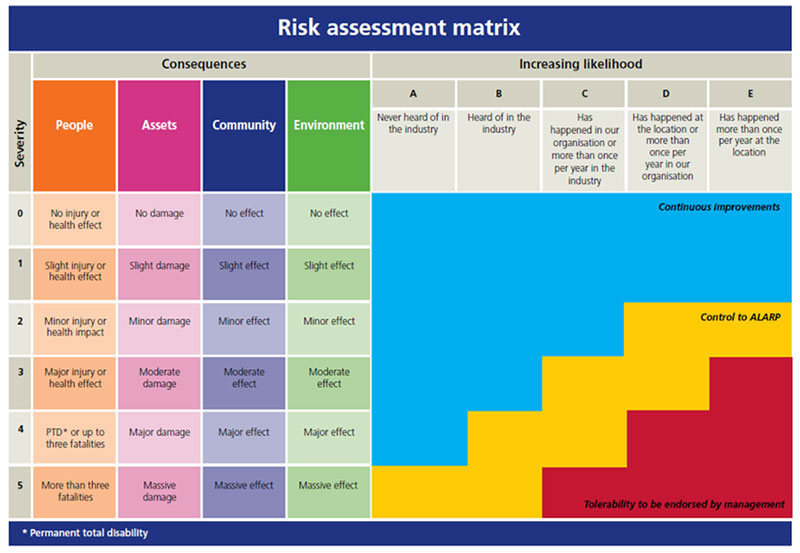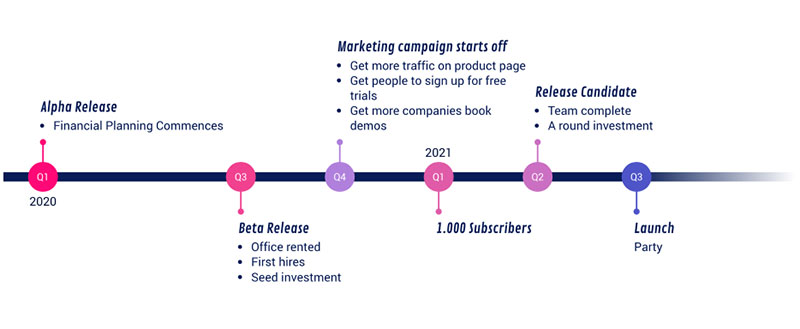How to Create a Software Development Plan for Your Dev Team

A successful piece of software does not come about by accident. It takes clear planning and careful execution.
Preparing before starting a project determines the success or failure of the product.
A well-prepared process requires purpose, clear objectives, schedule, revisions, and deliverables. With these, a project leader can gain an understanding of costs and resources.
Defining these parameters will make a project run smoother. Too, it prevents it from slowing down or coming to a halt.
This article discusses the reasons for having a software development plan in place. It will show how to make one and provide some practical tips.
What a Software Development Plan Is
Every software development project has some features in common.
The process starts with conceiving an idea. Next, its design, realization, and programming.
It should also include the later parts of the application’s life cycle.
In its simplest form, a software development plan is a timeline of the project. It shows the scheduling for each phase, when it starts and when it finishes.
Zooming in on a phase shows the different substeps that it entails.
A software development plan communicates the approach that the project will take and the needed resources. This is important for the project team members, as well as clients and other stakeholders.
The development plan answers the following questions:
- What problems does the software project aim to address and solve?
- What are the main tasks?
- What are the resources that the project involves?
- When during the project are the resources needed?
- Which is the functionality chosen to address the problem?
- What is the estimated time to complete the project/sprints?
- What are the milestones, deadlines, deliverables, and dependencies?
- Who are the ones involved in the project?
- What are the responsibilities of each team member?
- How is the quality measured? What are the quality metrics?
There are different things that managers may include in the software management plan. These are the minimum:
- The expected outputs of the software.
The functionality details are not defined at this point. However, the plan should document the outputs.
- Who will release the software? This is often the principal investigator, project manager, or lead developer.
- The revision management procedure that the software development process will use.
- The license for each output.
How to Write a Software Development Plan
To construct an effective software development plan, it’s vital to understand its importance.
Below are the most common phases of a software development project. Use them as a guide when detailing the phases and elements of any project.
Analysis and Planning

After a client puts in a request for the development of software, the management team sits down to plan. These are some important elements to consider:
- Alignment. How does this project fit in with the company’s mission and goals?
- Resources. Does the company have the human and other resources to achieve project success?
- Scheduling. How does this project align with the timelines of other projects and goals?
- Cost. How much will it cost?
Get all the involved departments together. Do not forget developers, project managers, security, and other stakeholders.
Define The Goals
When defining the goals of the project, specify intentions, visions, and preferred endpoint. Such clarity makes it easier to predict the outcome of the project, both for the client and the company.
Defining the goals is also essential to write a realistic and concise project plan.
Software should automate certain tasks, boost productivity, or streamline processes. The exact goal should be clear.
With that in mind, define how to quantify the success of the project. Many managers make use of a Gantt chart to visualize this part.
Create a Team

Often, software development is teamwork.
Teams consist of various individuals. Each one brings their specific skills to the table.
That is important because the project also consists of different aspects. Selecting the right people contributes to the success of the project.
Some software development project teams are further divided into several smaller teams. Each sub-team then has its own special focus.
This can help to bring out individual skills and strengths.
In other instances, it is necessary to outsource certain tasks. This occurs when the company lacks staff with specific skill sets or other resources.
Some companies use external companies for recruiting and assembling a team.
With the number of people and departments involved, it is necessary to have one person that determines the direction. There should be one senior project manager who is the final decision-maker.
This should be someone with skill and experience in planning and executing a project.
We can help you turn your idea into reality, take over your existing project, or extend your current development team.
Schedule a free consultation at hello@tms-outsource.com, or fill out the form and we will follow up with you shortly.
Resources and Requirements
With the goals defined, teams can see what resources they need to achieve the desired outcome. When writing down the needed resources, think about the following elements:
- Resources
- Budget
- Time
Each element is vital to accomplish the work involved in reaching the set objectives. The resources will differ for each software development project plan.
This depends on the idea and size of the project. The availability of the resources defines the timeline and deliverables.
But there is more to this section than listing resources. It helps developers to understand the needs and goals of the software development process.
The length of the list will depend on the software project.
There are many factors to consider. They include the scale of the project and how detailed the initial requirements and goals were.
Large projects often involve many stakeholders or broad objectives. In those cases, specific targets can change at any moment.
Hence, allow for flexibility. This makes it possible to absorb any sudden changes and still hit the targets.
A skilled project manager can define in detail the needs of the software development process.
Constraints and Risks

Now, the clients, developers, and other parties can identify potential problems. Particularly problems that can slow down or stop the process.
They can classify them by production stages, such as development or product launch. It is good to also consider unforeseen circumstances.
Many software development teams use a risk matrix to identify potential issues. It then shows the likelihood of it occurring and predicts its impact.
Other often-used terms are chance and risk extent or severity.
There are two sides that a manager must consider. The technical risks and the business risks involved.
Some potential problem areas include:
- Support from management
- Appropriate schedule
- Appropriate budget
- Availability of skilled software developers.
Map the Business Processes
Analyze the activities of lower-level coworkers. Consider how they work and what they use to do their assignments.
Turn these activities into a flow diagram.
There is not one single approach to mapping business processes. In fact, there are various excellent methodologies available.
One of them is the Agile Methodology. It relies on short sprints to accomplish deliverables and maximize progress.
Consulting people from senior management is one way of dealing with bottlenecks. Yet, consulting people on the work floor may provide a very different angle on the issue.
The size of the organization will determine who and how many people to involve in the process.
Budget Estimation
This section is, of course, very important. Every action related to a software development project has a cost associated with it.
That is why it is so important to first define plans, requirements, and objectives. That will help to make an estimation of the total project cost.
There has to be a balance between budget and quality.
For that reason, many companies now opt to outsource the development work offshore. They have found that it is more cost-effective than doing it in-house.
Create a Timeline

A software development plan sets out a rough definition of the project phases at an early stage. The timeline gives a detailed plan of the needed steps and their deadlines.
This is the moment to divide project goals into manageable tasks. Before starting a task it is not always 100% clear how to accomplish it completely.
Still, take time to list whatever needs to be done and use as much detail as possible. That will make the bigger picture clearer too.
With a tasks list and an overview of the budget and human resources, it is possible to estimate the time needed.
The milestones are an important part of the timeline. It accounts for the work schedules and justifies the resources the project will use.
The problem with software development projects is the risk and uncertainty they bring.
It is thus wise to calculate some buffer time to complete all tasks. Also, the services of a project manager ensure that the project stays on track.
Sprint Meetings
Sprints and sprint meetings are part of modern management techniques. These techniques aim to minimize project time frames.
During sprint meetings managers, developers, and others involved in the project get together. They will discuss what tasks are on the schedule for that week.
Some managers prefer to have sprint meetings every two weeks, or even once a month. Any way works but needs to be in agreement with the project demands and expectations.
A task defines a sprint and each developer or team member has a specific task. The skill and experience of the team member determine the nature of the task.
It is up to the project leader or manager to determine which task to assign to which developer.
Continuous Revision and Modification

Testing, tracking, and bug fixing run parallel with the software development process. This is an ongoing process that aims to remove as many problems as possible and move the project forward.
After completion of the software comes another round of in-depth testing. Usually, a group of beta-testers does this.
User experience tools can show how users interact with the software.
Even after the software’s release, it is good for developers to look back at their work. Software development is a very dynamic and fast-moving field.
So, keeping older versions is very important.
If disputes arise during development, older versions are useful to refer back to. Color coding is a good way of keeping track of different versions.
Looking for a development partner?
If you’re looking for a technology partner, development team augmentation, or just a company for your software&app development initiatives, consider TMS.
TMS is a software and digital company in Belgrade, Serbia. We develop innovative and modern software.
A few examples include premium booking software Trafft, MedTech apps like MR Prepare, or MarTech/AdTech apps like the Advise Media Suite, among other great software examples.
Check out our services and also some of the work we’ve done for our clients. Who knows, maybe we’ll form a successful relationship.
Schedule a free consultation at hello@tms-outsource.com, or fill out the form and we will follow up with you shortly.
Risks Associated With Software Development Planning
Writing up a good software development project plan is not simple. When a software project increases in complexity, the planning becomes even more challenging.
The reason software projects fail is often found in poor project planning. The following section gives specific reasons why some software development project plans fail.
Unclear Goals
Success is only measurable when there are clear goals. In other words, it is not possible to achieve success if success is only a vague idea.
Poorly defined goals can ruin an entire project.
A project may start out with a certain focus but ends up in a very different place. There is a product, but it does not meet the aim of the project.
Those kinds of projects are impossible to keep on track because they have no clear goal.
So at the start of a project, during the planning phase, take time to understand the problem at hand. Consider how to measure success.
Plans Address the Wrong Needs
Software development projects are very dynamic and are subject to constant change.
In the beginning that is because project specifics are not developed in full detail. But also during the process changes occur.
Teams and stakeholders change their opinions over time. A software development plan must be flexible and written with the latest needs in mind.
Inadequate Documentation
Agility is good, but disciplined documentation is just as important. Starting with the planning phase, write down agreements, timelines, aspects, and project milestones.
Include Acceptance Criteria and User Stories. These help developers to grasp what the problem is and what kind of work it involves.
That will result in a product tailored to the needs of the client.
Communication Gaps
As in all projects, communication is of vital importance. User research and direct communication are two tools that can help with this process.
They help to define the user audience and adjust the product to their needs. Omitting them, as well as user validation, could result in an irrelevant product.
Don’t forget any external teams involved with the project. They too will appreciate and benefit from close communication.
No Leadership or Accountability

Some companies leave the entire software development process to the IT department. Managers and other executives push away all responsibility in some cases.
This puts the software development plan into the hands of people whose strengths may lay in different areas. It results in a lack of direction.
This will likely lead to the failure of any software development process. Afterward, no one wants to take responsibility for them.
Scope Creep
If goals are not defined and documented, this may have very large negative effects later on.
Individual sprint goals may be hard to achieve. The result is a delay in feedback and meeting deadlines.
Building agility into a software development plan makes the project easier to manage. There will always be changes in the project and agility helps to deal with these adjustments.
There is an easy way to include flexibility in any software development plan. Break down a large complex project into small achievable milestones.
Lack of User Testing and Feedback
Most software is for human use. It is important to keep that fact in mind.
If most humans find it difficult or unpleasant to work with, it is likely that in the end, no one will use it. That would be a waste of all the invested time and money.
Ending thoughts on how to create a software development plan for your dev team
The planning of a software development project is as important as the execution of it. It lays the foundation for success.
It reemphasizes the software project’s methodologies, standards, and methods of the development team.
It serves as a guide to keeping the project on track with budget, resources, and timeframes. That, in turn, helps to meet the objectives and keep communication clear and effective.
Yes, it takes time to write a software development project plan but the investment is worth it. A well-written software development plan can serve as a template for future projects.
If you enjoyed reading this article on creating a software development plan, you should check out this one about enterprise mobile app ideas.
We also wrote about a few related subjects like risk assessment matrix, business pivot examples, in-house development vs outsourcing, financial software development companies, why is refactoring your code important, startup consultants, types of investors, share options, IT outsourcing failures, software development principles, and software development outsourcing trends.

